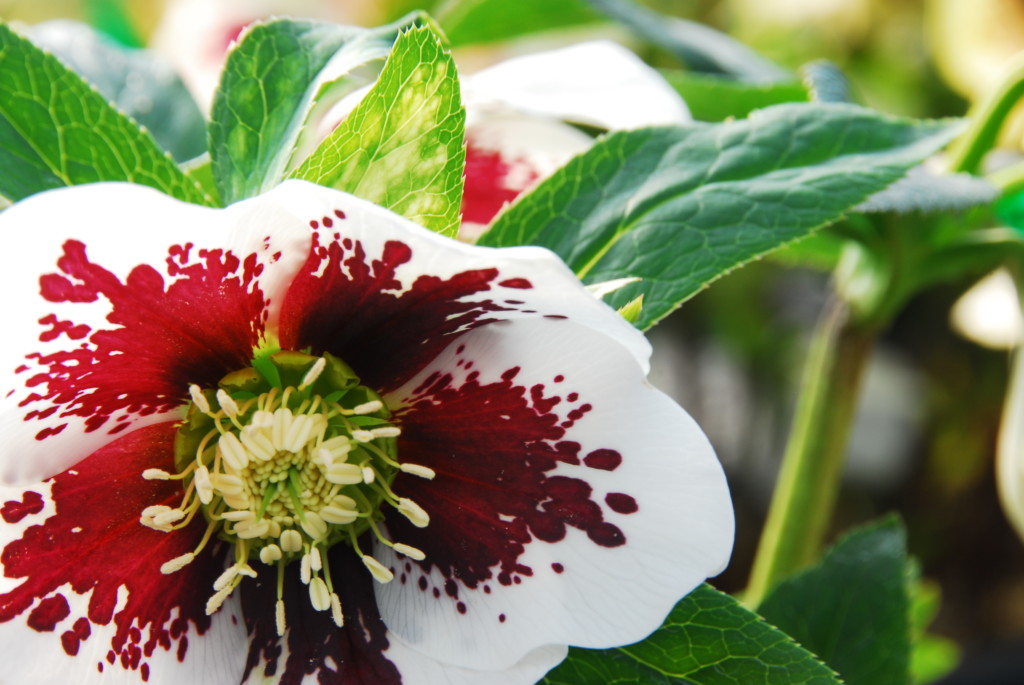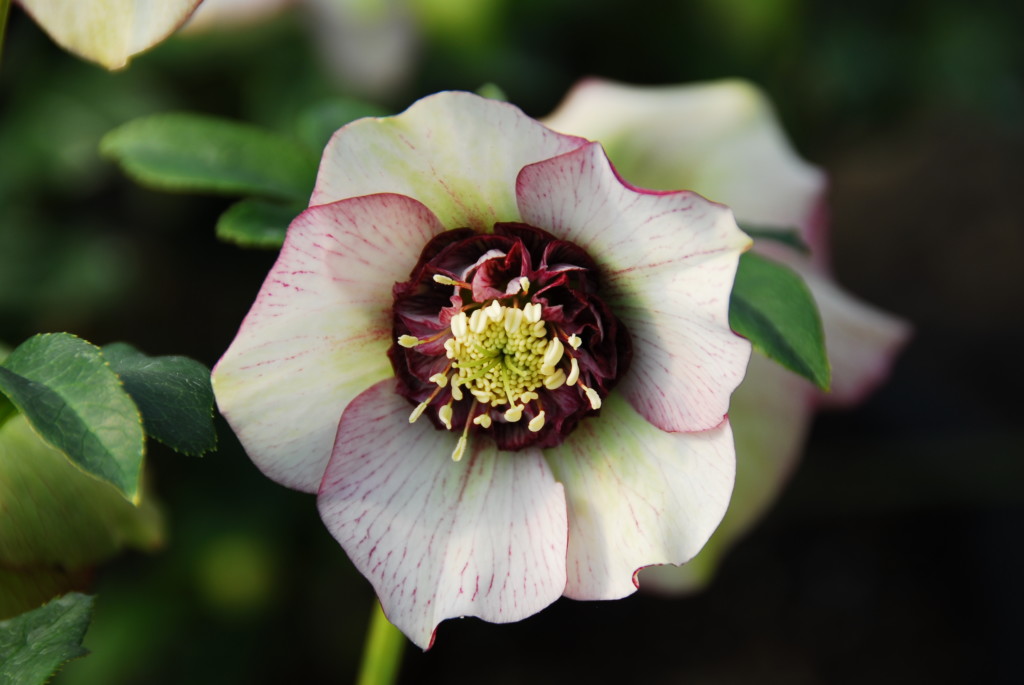At this florally quiet time of year (in the far southern states, at least), there’s an extraordinary opportunity for a plant to really shine, with little or no competition – to be a big fish in a seasonally small pond.
One of the few plants to rise to the challenge (and in doing so, totally blitz it) are the hybrid hellebores.
They’ve been in Australian gardens for many years (under the incorrect name of H. orientalis), as an unmatched provider of winter sparkle, but these older plants only ever worked around a single pigment – a sombre, moody, plummy pink/purple. The one pigment gave them several modes – either pure white (ie pigment-free), white spotted with pink, a clean, clear pink (which at a very rare best was nearly baby pink), through mottled, patchy purple, and, at most extreme (and most desirable, for many of us, for sheer novelty value), a deep, dark, black-plum.

The flowers are borne on very satisfyingly muscular plants that in leaf and flower stood at about 45cm tall. Every part has real substance, from the tough evergreen pedate leaves, to strong, gutsy stems, to flowers of a robust, almost leaf-like quality that is a give-away of their non-petal origin (they’re actually sepals, not that this matters one iota to most of us).
Into this world of thoroughly worthy, workhorse winter flowerers (at least from an Australian perspective) came, in 1993, a book named ‘The Gardener’s Guide to Growing Hellebores’. Despite it’s down-home, practical-sounding name, this was a book for the serious hellebore enthusiast. The pics of multiple flowers on a page, showing a multi-coloured mix of reds, yellows, greens, spotted whites and slatey greys were mind boggling, and made you want them so badly that it hurt.

Such plants felt like they’d forever elude us here in Australia, as these named clones could only be propagated by excruciatingly slow vegetative means (ie by division, as seen wouldn’t come true to the parent), and required extensive (and therefore expensive) quarantine for importation.
But the book also triggered a move towards the development of consistent seed-strains. This involves a slow process of hand pollination, followed by strict culling of the progeny and crosses back to parents until seed produces reliably predictable plants. It also allows for much easier spread to other countries, and, once that exacting selection-work is done, a much faster way to produce large numbers of excellent plants.

Enter Peter Leigh. This is not really the place to tell his story, but swept up in the excitement generated by this book, Peter started his own breeding program, buying in seed from OS and developing his own seed strains with the exact focus and rigour required. His interest eventually morphed into Post Office Farm Nursery in Ashbourne, just out of Woodend, Victoria, which now sells plants that make those pictured in that hellebore-world-changing book look a little undercooked – plants far beyond our wildest dreams in colour intensity and diversity 25 years ago.
Over the years I often heard Christopher Lloyd ripping into the alluring dark plum forms, stating that they were ‘ineffective’ in the garden. Though I wasn’t sure I agreed, it certainly shifted my thinking about the difference between plants that produce flowers of irresistible beauty or fascination, and those that show up well, en masse, in the garden. For collective impact in broad-scale planting, there’s nothing to match a good, clean white, either single or double. A mixture of white and paler pinks also ‘reads’ well. Large plantings of the purples can, in the deep, drippy mountain gardens of Mt Macedon, the Dandenongs or the NSW Southern Highlands, tilt towards the depressing.

I had consequently come to the conclusion that the more novel varieties (the yellows, apricots, the blacks, the picotees, the spotteds, the mysterious slates) are best as individual potted specimens or in smaller, intimate plantings where I can keep them close by, and fondly flip up the flowers as often as I wanted. In large plantings, I’d avoid the temptation towards a ‘happy mix’, (which is happy in words only) and stick with the whites, or, where I dared to vary, to use a single seed strain, with only the occasional variation, here and there.
But then, last week, I bought a double yellow and a double white, and at some stage, put them down in such a way that their flowers intermingled. The effect was almost literally electric. Sparks nearly flew. One day I’ll plant a big bed of them, together.
Always love the winter rose since my first glimpse of it in Tasmania. Sadly, only one out of four varieties is doing well this winter in the heat of Sydney.
Michael, isint all the parts of the plant toxic? Here in Buenos Aires, we dont have enough cold anymore to grow it, does better down south….. tks…. love them!!!
sorry correct…. arent all the parts…..
The heat of Sydney in June? How commonplace is it becoming for gardeners to reference climate change?
Love my helebores. Lucky enough to have been able to create beds along each side of my front garden path, which is flanked by a large oak and a liquid amber. Perfect conditions. Even so, the drought early this year has had a slight impact on them. Blue Mountains.